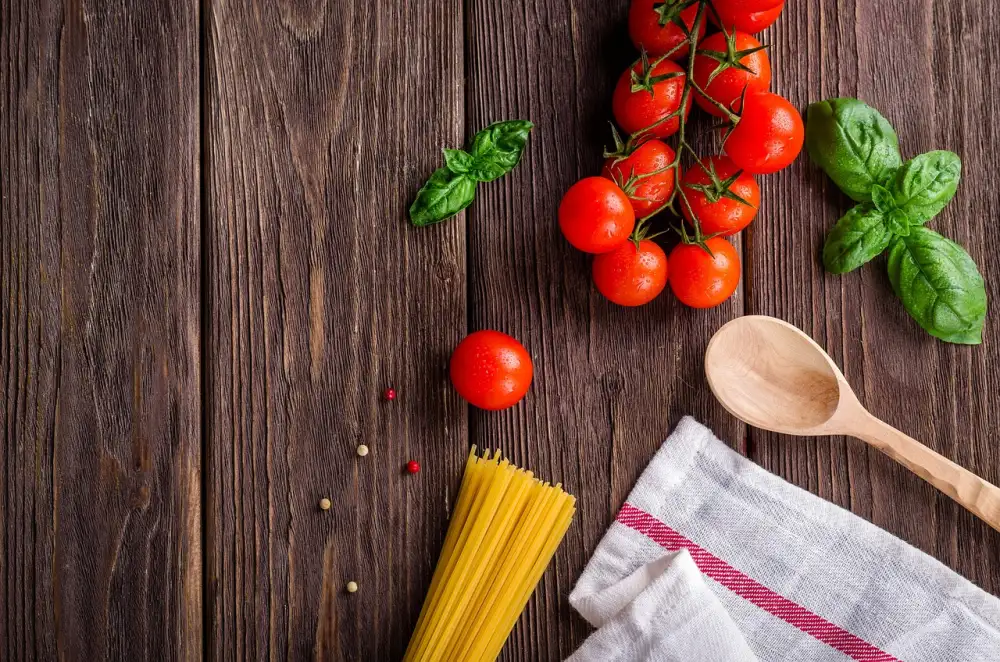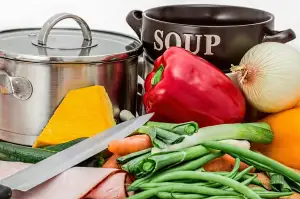Master the Art of Homemade Pasta: A Step-by-Step Guide to Crafting Delectable Noodles at Home

There is something truly magical about the taste and texture of homemade pasta. The tender noodles, made from scratch with love and care, have a way of transporting us to the heart of Italy. While store-bought pasta certainly has its place in our kitchens, there is nothing quite like the satisfaction of creating your own pasta from start to finish.
Homemade pasta allows you to unleash your creativity in the kitchen and experiment with different flavors and shapes. Whether you prefer classic spaghetti or want to try your hand at stuffed ravioli, making pasta from scratch opens up a world of culinary possibilities.
While it may seem daunting at first, mastering the art of homemade pasta is simpler than you might think. With a few basic ingredients and some patience, you can create delectable noodles that will impress even the most discerning palates.
In this step-by-step guide, we will take you through the process of crafting homemade pasta, from gathering ingredients to cooking and serving your masterpiece. So put on your apron, dust off your rolling pin, and get ready to embark on a delicious journey into the world of homemade pasta.
Gathering Ingredients and Equipment
Before embarking on your homemade pasta journey, it's important to gather all the necessary ingredients and equipment. The beauty of making pasta from scratch lies in its simplicity, requiring just a few basic ingredients that you probably already have in your kitchen.
To start, you'll need all-purpose flour, eggs, and salt. While some recipes call for semolina flour or a combination of flours, all-purpose flour works perfectly fine for beginners. It's readily available and produces a tender pasta texture.
In terms of equipment, you'll need a large mixing bowl to combine the ingredients and knead the dough. A fork or your hands can be used for mixing initially. Additionally, a rolling pin is essential for rolling out the dough later on.
For those looking to take their pasta-making skills to the next level, investing in a pasta machine is highly recommended. This handy tool simplifies the process by rolling out the dough evenly and cutting it into various shapes with ease. However, if you don't have a pasta machine, don't worry! A rolling pin and a sharp knife will do just fine.
Lastly, make sure to have a clean surface for kneading and rolling out the dough. A lightly floured countertop or wooden board works perfectly.
With these ingredients and equipment at hand, you're ready to dive into the art of homemade pasta making. So let's move on to the next step: making the pasta dough!
Making the Pasta Dough
To start your homemade pasta journey, you'll need to make the perfect dough. Begin by measuring out 2 cups of all-purpose flour and placing it on a clean work surface. Create a well in the center of the flour and crack 3 eggs into it.
Using a fork, gently beat the eggs, gradually incorporating the flour from the sides of the well. Continue mixing until a shaggy dough forms. If the dough feels too dry, add a tablespoon of water at a time until it comes together.
Once the dough starts to come together, use your hands to knead it for about 5-7 minutes until it becomes smooth and elastic. This will help develop gluten in the dough, giving your pasta its desired texture.
If the dough feels sticky during kneading, sprinkle some extra flour onto your work surface or hands to prevent sticking. Conversely, if it feels too dry, lightly wet your hands with water while kneading.
After kneading, shape the dough into a ball and wrap it tightly in plastic wrap. Allow it to rest at room temperature for at least 30 minutes. This resting period allows gluten strands to relax and ensures easier rolling and cutting later on.
Remember that making pasta dough is all about practice and feel. Don't worry if your first attempt isn't perfect – with time and experience, you'll master this essential step in creating delectable homemade pasta.
Kneading and Resting the Dough
Kneading is a crucial step in the pasta-making process as it helps develop gluten, giving the dough its desired texture. Once you have mixed your ingredients together, transfer the dough onto a clean, lightly floured surface. Use the heel of your hand to push the dough away from you, then fold it back over itself and give it a quarter turn. Repeat this motion for about 8-10 minutes until the dough becomes smooth and elastic.
After kneading, it's important to let the dough rest. This allows the gluten to relax and makes rolling out the pasta easier. Simply wrap the dough tightly in plastic wrap and let it rest at room temperature for at least 30 minutes or up to an hour.
During this resting period, you can prepare your pasta sauce or clean up your workspace. The resting time also allows the flavors of the ingredients to meld together, resulting in a more flavorful pasta.
Remember not to skip these steps as they are essential for achieving that perfect homemade pasta texture. So take your time, enjoy the process, and let your dough rest before moving on to the next step – rolling and cutting!
Rolling and Cutting the Pasta
Once your pasta dough has rested, it's time to roll it out and cut it into the desired shape. Start by dividing the dough into smaller portions for easier handling. Take one portion and flatten it with your hands, then dust it lightly with flour to prevent sticking.
Next, using a rolling pin or a pasta machine, begin rolling out the dough. If using a rolling pin, roll from the center outward, rotating the dough occasionally to ensure even thickness. Aim for a thin sheet of pasta, about 1/8 inch thick.
If you have a pasta machine, set it to the thickest setting and pass the dough through. Fold the dough in half and repeat this process several times until the texture is smooth and elastic. Gradually decrease the thickness setting on the machine as you continue passing the dough through, until you reach your desired thickness.
To cut your pasta into noodles, lightly dust both sides of the rolled-out dough with flour. For fettuccine or linguine-style noodles, use a sharp knife or pizza cutter to slice thin strips about 1/4 inch wide. For spaghetti-style noodles, use a pasta machine attachment or hand-cranked cutter specifically designed for this shape.
As you cut each strip of pasta, gently toss it with more flour to prevent sticking. Once all of your pasta is cut, carefully separate any strands that may be stuck together and lay them out on a clean surface or drying rack.
Remember that fresh homemade pasta cooks much faster than dried store-bought varieties. To cook your homemade noodles, bring a large pot of salted water to a boil and add in your pasta. Cook for just 2-3 minutes until al dente (firm to the bite), then drain well.
Serve your homemade pasta immediately with your favorite sauce or topping. The delicate texture and fresh flavor will truly elevate any dish you create. Enjoy!
Cooking and Serving the Homemade Pasta
Once you have rolled and cut your homemade pasta, it's time to cook it to perfection. Fill a large pot with water and bring it to a rolling boil. Add a generous amount of salt to the water, as this will enhance the flavor of the pasta.
Gently drop the fresh pasta into the boiling water and give it a quick stir to prevent sticking. Cook for about 2-3 minutes or until al dente, which means it should still have a slight bite to it. Be sure not to overcook the pasta, as it can become mushy.
Using a slotted spoon or tongs, carefully remove the cooked pasta from the pot and transfer it to a colander to drain excess water. Avoid rinsing the pasta with cold water, as this will remove its natural starches that help sauces adhere.
Now comes the exciting part - serving your homemade pasta! Toss the cooked noodles with your favorite sauce or toppings. Traditional options include classic marinara, creamy Alfredo, or fragrant pesto. Don't be afraid to get creative with different flavors and ingredients.
Garnish your dish with fresh herbs like basil or parsley for an added burst of freshness. Grate some Parmesan cheese on top for extra richness and depth of flavor. Serve immediately while still hot, ensuring that every bite is filled with deliciousness.
Pair your homemade pasta with a glass of wine or your preferred beverage for a complete dining experience. Sit back, relax, and savor each mouthful of tender homemade noodles coated in delectable sauce.
Remember, homemade pasta is best enjoyed when shared with loved ones. Invite friends or family over for a delightful meal that showcases your culinary skills. The satisfaction of creating something from scratch will surely impress everyone at the table.
So go ahead and indulge in the fruits of your labor - enjoy every single bite of your homemade pasta creation!
Tips and Variations for Homemade Pasta
1. Experiment with Flavors: Add herbs, spices, or vegetable purees to your pasta dough for a unique taste. Try incorporating spinach, beetroot, or saffron for vibrant colors and added nutrients.
2. Play with Shapes: Besides traditional spaghetti and fettuccine, explore different pasta shapes like farfalle (bow-tie), penne (tube-shaped), or ravioli (stuffed). Use cookie cutters to create fun shapes that kids will love.
3. Get Creative with Fillings: If making stuffed pasta like ravioli or tortellini, experiment with various fillings such as ricotta cheese and spinach, butternut squash and sage, or mushroom and truffle oil.
4. Optimize Cooking Time: Fresh homemade pasta cooks much faster than dried store-bought pasta. Boil it for just 2-3 minutes until al dente to maintain its texture and flavor.
5. Sauce Pairing: Pair your homemade pasta with the right sauce to enhance its taste. Lighter sauces like pesto or olive oil-based dressings work well with delicate noodles, while hearty ragu or creamy Alfredo complements thicker cuts.
6. Don't Waste Leftovers: If you have leftover cooked pasta, turn it into a delicious pasta salad by adding fresh vegetables, dressing, and protein like grilled chicken or shrimp.
7. Freeze for Later: Make extra batches of homemade pasta and freeze them in individual portions for quick meals later on. Just thaw in the refrigerator before cooking.
8. Have Fun Toppings: Elevate your homemade pasta dish by adding toppings like freshly grated Parmesan cheese, toasted breadcrumbs, chopped herbs, or a drizzle of flavored oils.
By following these tips and exploring variations in flavors and shapes, you can elevate your homemade pasta dishes from ordinary to extraordinary!
Now that you have mastered the art of making homemade pasta, it's time to enjoy the fruits of your labor. There is something truly special about sitting down to a plate of fresh, handmade noodles that you crafted with your own hands.
Whether you choose to serve your pasta with a simple marinara sauce, a creamy Alfredo, or a flavorful pesto, the taste and texture of homemade pasta will elevate any dish. The delicate yet chewy noodles will soak up the flavors of your sauce, creating a harmonious and satisfying bite.
Don't be afraid to get creative with your toppings and fillings. Add some sautéed vegetables for a burst of freshness, sprinkle some grated cheese for extra richness, or toss in some cooked seafood for an indulgent treat. The possibilities are endless when it comes to customizing your homemade pasta creations.
Remember to savor each bite and appreciate the effort that went into making this culinary masterpiece. Share it with loved ones and watch as their faces light up with delight. Homemade pasta has a way of bringing people together and creating lasting memories around the dinner table.
So go ahead, gather your loved ones, pour yourself a glass of wine, and indulge in the delectable goodness that is homemade pasta. It's not just about nourishing your body; it's about feeding your soul with love and passion for food. Enjoy every moment and bask in the satisfaction of knowing that you have mastered this timeless culinary art form.
Published: 28. 11. 2023
Category: Food



